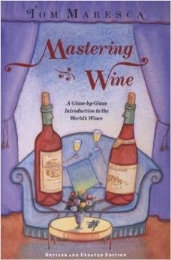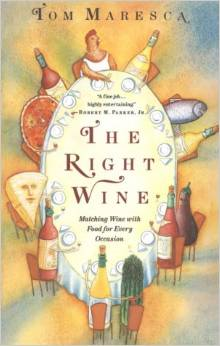My book-writing days are probably behind me, but if I were to write a new wine book, I know what I’d call it – Native Uprising – and it would focus on the ascent of indigenous Italian grape varieties. Italian winemaking has made fantastic progress in the past 50 years (yes, my memory goes back that far, more’s the pity), and, while that progress may have been turbocharged by the phenomenon of the so-called supertuscans and the brief prominence of “international” (meaning grown in France and California and Australia) grape varieties, the real motor that has propelled it all along has been the native grapes of the many Italian wine regions.
It’s probably a clear indication of the deeply ingrained chauvinism of the wine world that we continue to speak of “indigenous” or “native” Italian grapes, with often enough an implication of quaintness and lesser standing and quality, while no one – myself included – ever speaks of Cabernet and Merlot and Pinot Noir and Chardonnay, or even Syrah or Sauvignon, as indigenous French grapes – which, of course, they are. The fact that Nebbiolo and Sangiovese – not to mention Barbera – are now grown around the world hasn’t made them “international” varieties: they remain humble, indigenous – to Italy – grapes.
So a good part of my reason for once again taking pen (keyboard?) in hand would be counter that notion of inferiority. It shouldn’t be too difficult. The strides that Piemontese and Tuscan winemakers in particular have made, and especially their success in drawing publicity, have certainly raised the visibility and the status of Nebbiolo and Sangiovese for any wine drinker who has gotten beyond an introductory level of wine knowledge. Other noble Italian red wines lag that level of recognition, but Aglianico and Amarone (not a grape variety, I know, but bear with me) are not far behind.
White wines may be a little trickier, because so many of the fine whites of northern Italy are vinified from “international” varieties that have been cultivated in Friuli and Alto Adige for almost two centuries. (Which raises the interesting question, how long must a variety be grown in an area before it becomes native? And where did the ancestors of those “indigenous” French varieties originate?) The excellence of many other Italian white varieties is only beginning to be discerned. The process is slow because so many of them are in the south, which for many wine lovers, and even for many Italians, is terra incognita.
Which brings me to what would be the second purpose of the book I’ll probably never write: to call attention to the cornucopia of interesting-to-distinguished varieties awaiting their moment in the south of Italy. In a rather haphazard way, I’ve spent a lot of time in the past two or three years in southern Italy, and every visit has been a revelation. Maybe a learning experience is a better way to put it: not only have I been pleasantly surprised by the quality of the wines, but I have each time encountered grape varieties previously unknown to me. Even more important, these varieties have not been simply quaint survivors of another age, but grapes with real wine-making interest and potential.
For example, let’s consider Puglia, which I’ve written about recently both here and in Decanter. Almost everybody knows about Primitivo, the cousin of Zinfandel. There are some excellent ones, but in my opinion Primitivo is far less interesting than either Negroamaro or Uva di Troia, or even Susumaniello. These are red grapes of distinctive character, and in the hands of careful producers they are already capable of making long-lived, high-quality wines. With more clonal research and more attention from more producers, their future is wide open.
Puglia shows less impressively with white grapes, but even there some bright spots appear: Bombino Bianco, Verdeca, and local clones of Greco have promise. And of course, throughout the rest of the south, white grapes shine: In Campania, Greco di Tufo and Fiano di Avellino lead the way, but those two varieties do quite well on volcanic soils all through the south. (The Soave zone in the Veneto is the northernmost of Italy’s volcanic regions, and its prized Garganega, which makes Soave Classico, is probably a descendant of, if not the same as, Greco.)
And in Sicily, the hyper-volcanic slopes of Etna already yield world-class wines, whites from the native Carricante and reds from Nerello mascalese, which also forms a major portion of what is probably Sicily’s most distinguished red wine, Palari, from the nearby Faro DOC.
That’s far from the whole story even for the south: The white Falanghina is fine and getting better all the time, and the red Piedirosso, a long-time blending companion of Aglianico, is undergoing a significant revival. Even the once lightly regarded Coda di Volpe is rewarding serious attention from winemakers.
Nor is the north of Italy exempt from this growing wave of attention to each region’s viticultural heritage. In Piedmont, Rucché and Timorasso – red and white respectively – lead the contingent of reviving varieties, with the whites Favorita and Nascetta getting more attention every year.
.In Tuscany, Merlot is losing ground to Colorino and Mammolo as the blending grapes of choice in Chianti, with several experimental bottlings of monovarietal wines – especially of Colorino – already available.
In the Veneto, the once-scorned local clone of Trebbiano is achieving real importance in the Soave zone. And Friuli is a minestrone of local varieties, especially of red grapes: Schiopettino, Tazzelenghe, and Pignolo, to name only the currently most important. This is by no means exhaustive: there are many, many more potentially noble varieties out there.
So there is definitely a book to be written, and a lot of fascinating – and delicious – research to be done. I’m not feeling overly ambitious these days – grey winter weather always has that effect on me – but maybe I’ll do it yet.


























